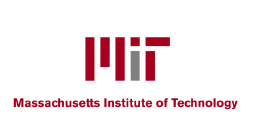Shuguang Zhang is at MIT Media Lab, Massachusetts Institute of Technology. His current research focuses on designs of biological molecules, particularly proteins and peptides. He received his B.S from Sichuan University, China and Ph.D. in Biochemistry & Molecular Biology from University of California at Santa Barbara, USA. He was an American Cancer Society Postdoctoral Fellow and a Whitaker Foundation Investigator at MIT. He was a 2003 Fellow of Japan Society for Promotion of Science (JSPS fellow). His work of designer self-assembling peptide scaffold won 2004 R&D100 award. He won a 2006 Guggenheim Fellowship and spent academic sabbatical in University of Cambridge, Cambridge, UK. He won 2006 Wilhelm Exner Medal of Austria. He was elected to Austrian Academy of Sciences in 2010. He was elected to American Institute of Medical and Biological Engineering in 2011 and elected to US National Academy of Inventors in 2013, and elected to the European Academy of Science and Arts in 2021. He won the 2020 Emil Thomas Kaiser Award from the Protein Society. He is a honorary member of the Erwin Schrödinger Society and gave for the 20th Erwin Schrödinger Colloquium at the Austrian Academy of Sciences in 2021. He published over 200 scientific papers that have been cited over 37,000 with a h-index 93. He is also a board member of Molecular Frontiers Foundation. Molecular Frontiers Foundation organizes annually Molecular Frontiers Symposia in Sweden and around the world. The Foundation encourages young people to ask big and good scientific questions about nature. The selected winners will be awarded for Molecular Frontiers Inquiry Prize.
Recent scientific publications on the QTY code:
Zhang, S., Tao, F., Qing, R., Tang, H., Skuhersky, M., Corin, K., Tegler, L., Wassie, A., Wassie, B., Kwon, Y., Suter, B., Schubert, T., Yang, G., Labahn, J., Kubicek J., & Maertens, B. (2018) QTY code enables design of detergent-free chemokine receptors that retain ligand-binding activities. Proc. Natl. Acad. Sci. USA 115 (37) E8652-E8659.
Qing, R., Han, Q., Fei, T., Skuhersky, M., Badr, M., Chung, H., Schubert, T., & Zhang, S. (2019) QTY code designed thermostable and water-soluble chimeric chemokine receptors with tunable ligand-binding activities. Proc. Natl. Acad. Sci. USA 116 (51) 25668-25676.
Hao, SL., Jin D., Zhang, S. & Qing, R. (2020) QTY code-designed water-soluble Fc-fusion cytokine receptors bind to their respective ligands. QRB Discovery 1 (e4) 1-9, Cambridge University Press
Qing, R., Tao, F., Han, Q., Chung, H., Ni, J., Suter, B., Kubicek, J., Maertens, B., Schubert, T. & Zhang, S. (2020) Non-full-length water-soluble CXCR4QTY, CCR5QTY chemokine receptors and implication for overlooked truncated membrane receptors iScience, Cell Press, 23 (12): 101670.
Tegler, L.T., Corin, K., Skuhersky, M., Pick, H. Vogel, H. & Zhang, S. (2020) G protein-coupled receptor CXCR4 designed by the QTY code becomes more hydrophilic and retains cell-signaling activity. Scientific Reports UK 10, 21371.
Skuhersky, M., Tao, F., Qing, R., Smorodina, E., Jin, D., & Zhang, S. (2021) Comparing native crystal structures and AlphaFold2 predicted water-soluble G protein-coupled receptor QTY variants. Life 11(12) 10.3390/life11121285
Tao, F., Tang, H., Zhang, S. Li, M., & Xu, P. (2022) Enabling QTY server for designing water-soluble α-helical transmembrane proteins. MBio 13 (1) e03604-21 https://doi.org/10.1128/mbio.03604-21
Smorodina, E., Tao, F., Qing, R., Jin, D., Yang, S. & Zhang, S. (2022) Comparing 2 crystal structures and 12 AlphaFold2 predicted human membrane glucose transporters and their water-soluble QTY variants. QRB Discovery 3, e5, 1-11.
Smorodina, E., Igor Diankin, Tao, F., Qing, R., Yang, S. & Zhang, S. (2022) Structural informatic study of determined and AlphaFold2 predicted molecular structures of 13 human solute carrier transporters and their water-soluble QTY variants. Scientific Reports 12, 20103. doi: 10.1038/s41598-022-23764-y.
Egli, M. & Zhang, S. (2022) How the alpha-helix got its name. Nat Rev Mol Cell Biol. 23, 165.
Zhang, S. & Egli, M. (2022) Hiding in plain sight: three chemically distinct α-helix types. Quarterly Review of Biophysics (QRB) 55, e7.
Qing, R., Hao, S.L., Smorodina, E, Zalevsky, A., Jin, D. & Zhang, S. (2022) Protein design: from the aspect of water solubility. Chemical Reviews, 122, 18, 14085-14179.
Zhang, S. (2022) Life has its ups and downs, always ask questions. Molecular Frontiers Journal, Vol. 6, No. 01n02.
Qing, R., et al. (2023) Scalable biomimetic sensing system with membrane receptor dual-monolayer probe and graphene transistor arrays (Science Advances, revision under review).
Meng, R., et al (2023) Reverse-QTY code design of active human serum albumin self-assembled amphiphilic nanoparticles for effective anti-tumor drug doxorubicin release in mice. (PNAS, In press).
Smorodina, E., Tao, F., Qing, R., Yang, S. & Zhang, S. (2023) Structural bioinformatics of molecular structures of 6 determined and 12 AlphaFold2 predicted native human potassium channels and their water-soluble QTY variants (PLoS ONE Bioinformatics, under review, 3-2023).







